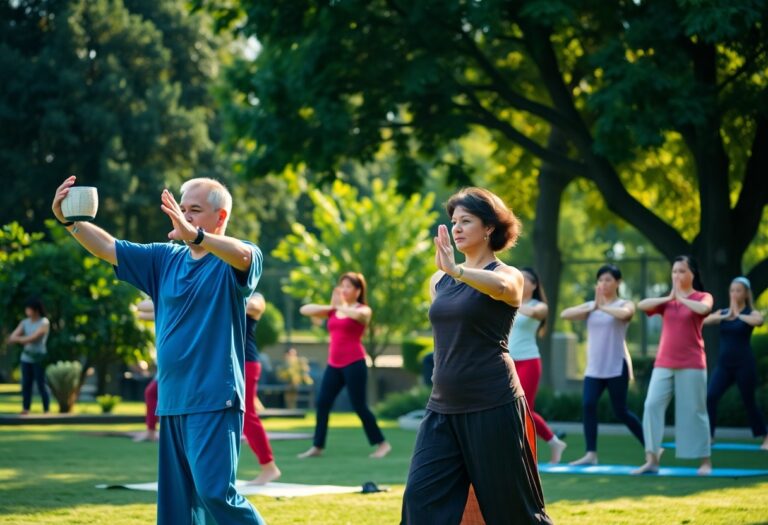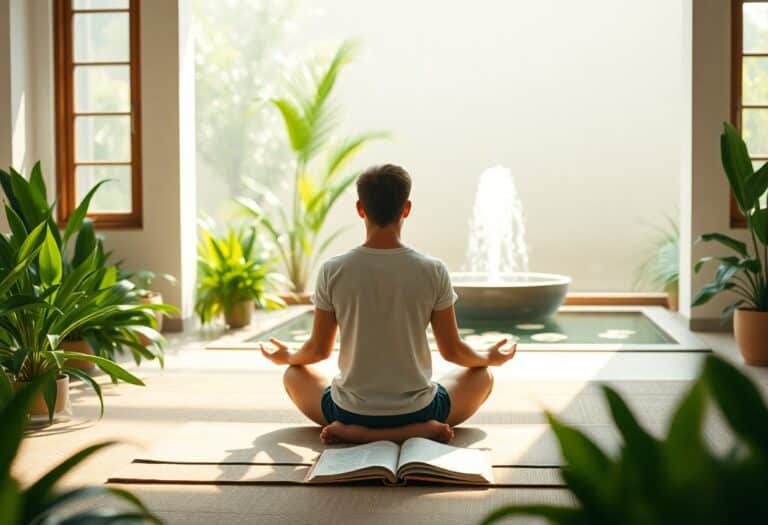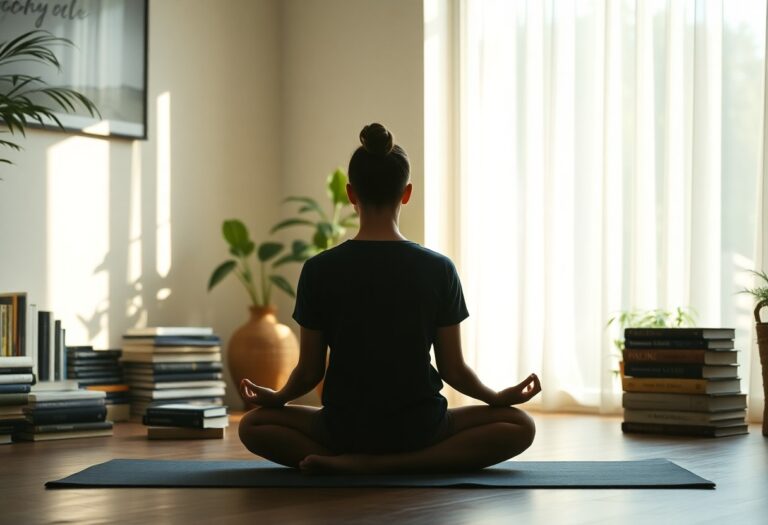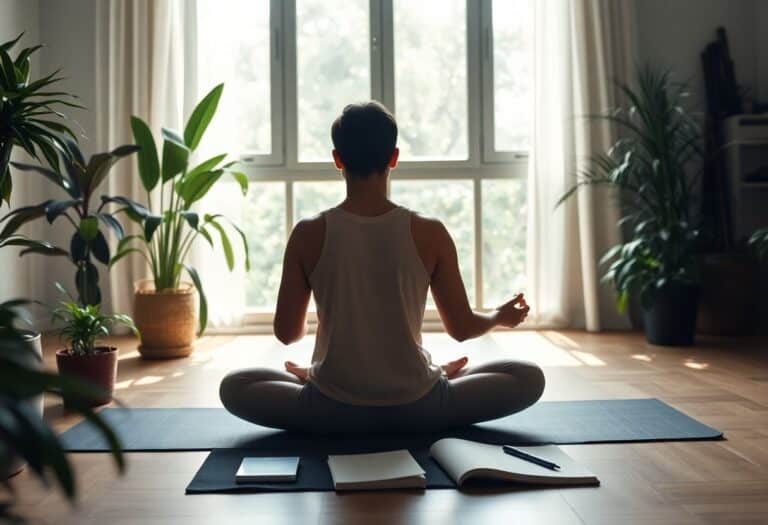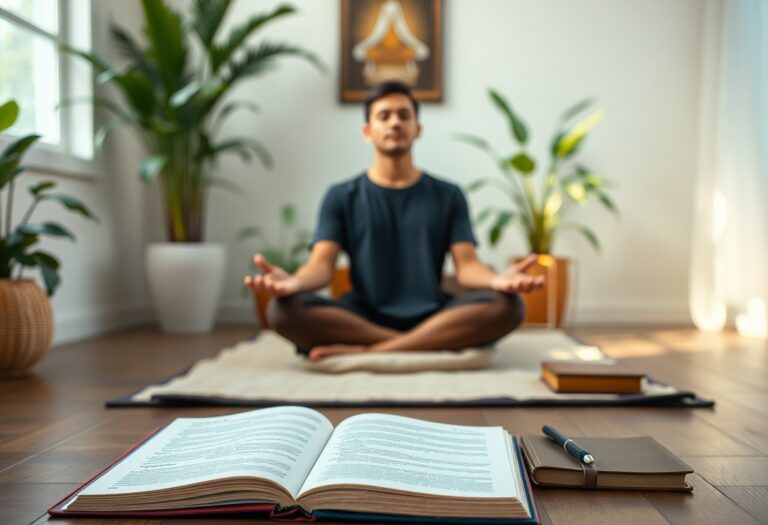Meditation can profoundly transform your life, helping you cultivate a greater sense of peace and clarity in your daily existence. By committing to the practice of Buddhism meditation, you can unlock the secrets of your mind, promote mindfulness, and enhance your emotional well-being. In this guide, you will discover seven important steps that will support you on your journey towards mastering this transformative practice. Embrace these steps to create a more fulfilling and balanced lifestyle.

Key Takeaways:
- Understanding the principles of Buddhism is important for effective meditation practice.
- Consistency in your meditation routine enhances focus and mindfulness over time.
- Utilising breath awareness can help to anchor your thoughts and silence mental chatter.
- Setting intentions for your practice can guide your mindset and deepen your experience.
- Patience is vital; progress in meditation develops gradually, requiring time and perseverance.


Understanding Buddhism Meditation
For many, Buddhism meditation is a profound journey into self-awareness and mindfulness. It encompasses various techniques aimed at cultivating mental clarity, emotional serenity, and a deeper understanding of one's nature. By practising these methods, you can experience greater peace and insight in your everyday life, leading to transformative personal growth.
The Philosophy Behind Meditation
Behind the practice of meditation lies the core philosophy of Buddhism, which emphasises the importance of mindfulness, presence, and the reduction of suffering. By engaging in meditation, you learn to observe your thoughts and emotions without attachment, allowing you to cultivate a more compassionate and enlightened mindset.
Types of Buddhism Meditation
To explore Buddhism meditation, you can practise several types that cater to different needs and goals:
| Mindfulness Meditation | Focuses on being present in the moment, observing thoughts without judgement. |
| Loving-Kindness Meditation | Encourages you to develop compassion towards yourself and others. |
| Zen Meditation (Zazen) | A seated form of meditation that emphasises a calm body and mind. |
| Vipassana Meditation | Involves deep awareness and insight into the nature of reality. |
| Metta Meditation | Fosters a sense of goodwill and kindness towards oneself and all living beings. |
The variety of meditation types offers unique benefits, enabling you to choose the one that resonates most with your personal journey. Engaging with these practices helps develop emotional resilience and a deeper connection with your inner self.
It is necessary to understand the benefits of each type of Buddhism meditation you choose to practise:
| Mindfulness Meditation | Reduces anxiety and enhances focus. |
| Loving-Kindness Meditation | Promotes emotional healing and connection. |
| Zen Meditation (Zazen) | Improves concentration and mental clarity. |
| Vipassana Meditation | Encourages deep understanding of the self and existence. |
| Metta Meditation | Increases feelings of love and compassion. |
The exploration of these practices encourages you to reflect on your relationship with yourself and the world, ultimately paving the way for profound growth and enlightenment.
The Importance of Mindfulness
Assuming you wish to launch on a journey of self-discovery and inner peace, mindfulness serves as a foundational pillar in Buddhism meditation. It enables you to cultivate an awareness of your thoughts, feelings, and surroundings, allowing you to fully engage with the present moment. By practising mindfulness, you can reduce stress, enhance emotional regulation, and foster a deeper connection with yourself and others.
Developing Awareness
About developing awareness, it is imperative to recognise the subtleties of your thoughts and emotions. This skill can be honed through consistent meditation practice, where you pay close attention to your breathing and bodily sensations. By doing so, you begin to notice distractions and distractions, which allows you to steer your focus back to the present moment with greater ease.
Cultivating Presence
Mindfulness is not just about observing; it's about actively cultivating your presence in every moment. To achieve this, you must engage in mindfulness techniques that anchor you to the present. These can include concentrating on your breath, practising body scans, or even simply noticing the sensations around you. As you allow yourself to immerse in these experiences, you will uncover a profound sense of peace and clarity that can transform your everyday life. By prioritising the present, you not only enhance your meditation practice but also enrich your interactions and daily experiences.
Step 1: Setting Up Your Space
Keep in mind that your meditation environment plays a vital role in your practice. To create a conducive atmosphere, choose a quiet, dedicated space free from distractions. This will help you focus and relax. For additional insights, explore this guide on First steps into Buddhist meditation.
Creating a Peaceful Environment
Against a backdrop of chaos, you will find peace and clarity by ensuring your meditation space is tidy and harmonious. Remove clutter, as it can be a distraction, and consider using calming colours to help evoke a sense of serenity.
Incorporating Elements of Nature
An effective way to enhance your meditation space is by integrating natural elements. This connection to nature can foster tranquility and minimise stress, creating a deeper meditative experience. You might consider using plants, water features, or natural light to further enhance this connection.
In fact, incorporating elements of nature can significantly improve your meditation practice. Surrounding yourself with greenery can boost your mood, while the sound of running water can help drown out distractions. The presence of natural light can enhance your focus and foster a more calming atmosphere. By engaging with nature, you not only create a more inviting space but also enhance your overall sense of well-being.
Step 2: Establishing a Routine
To cultivate a successful meditation practice, you must establish a routine that works for you. This helps create a consistent space for introspection and growth. Consider integrating these practices into your daily life by following the Teachings – Chan Practice | Chan Meditation, which can provide valuable guidance on building your meditation habits.
Finding the Right Time
At the beginning of your journey, it is important to identify a time that suits your lifestyle for meditation. Whether it's early morning or evening, pick a moment when you can be free from distractions and fully present. Consistency in timing can facilitate a deeper connection to your practice.
Sticking to a Schedule
Against the odds of daily life, committing to your meditation schedule may prove challenging. Establishing a set time each day can be beneficial in creating a strong habit. Make a concerted effort to prioritise this time, recognising that your well-being depends on it.
Routine is the backbone of any successful meditation practice. By consistently dedicating time to your meditation, you create an environment of discipline and focus. It's important to acknowledge potential distractions that may arise and actively work to mitigate them. A strong routine not only promotes consistency but also enhances your overall mindfulness and mental clarity, vital components of your journey in practising Buddhism meditation.
Step 3: Posture and Breathing Techniques
Not only is your mindset important in meditation, but so too are your posture and breathing techniques. Adopting the right position allows energy to flow freely throughout your body, making it easier to focus your mind. Whether you choose to sit on a cushion, a chair, or the floor, ensuring your spine is straight and your body is relaxed will significantly enhance your practice.
Proper Sitting Postures
About finding the right sitting posture, it is necessary to establish a comfortable position that supports your back while allowing you to remain alert. You may choose the traditional cross-legged position or sit on a chair with your feet flat on the ground. Ensure your hands rest gently on your knees or in your lap, facilitating a sense of stability and serenity during your meditation.
Breathing Exercises for Focus
Techniques for effective breathing can profoundly impact your ability to concentrate during meditation.
And by incorporating breathing exercises into your practice, you can enhance your focus and create a deeper connection between your body and mind. Begin with the 4-7-8 technique: inhale through your nose for a count of four, hold your breath for seven seconds, and exhale through your mouth for a count of eight. This method helps to calm your nervous system and can significantly reduce anxiety, allowing you to enter a peaceful meditative state more readily. Regular practice can lead to a greater sense of mindfulness and overall well-being.
Step 4: Overcoming Distractions
Unlike the peaceful moments we strive for during meditation, distractions often arise to test our focus. To help with this, consider utilising Guided Meditation: 7 Steps to Compassion as a resource, which can gently lead you back to your centre and enhance your practice.
Identifying Common Interruptions
An awareness of common interruptions, such as noise, thoughts, and physical discomfort, is crucial for your practice. By acknowledging these distractions rather than resisting them, you can cultivate a more focused state of mind during your meditation sessions.
Techniques to Maintain Focus
With consistent practice, employing specific techniques can significantly strengthen your focus. Techniques such as deep breathing, returning to your breath, or visualising a calming image can enhance your ability to stay centred.
Considering these techniques, it's important to recognise the potential distractions inherent in your environment, and proactively establish a meditation space that is free from interruptions. By eliminating external noises and creating a comfortable setting, you allow yourself to dive deeper into your practice. Incorporating techniques like mindfulness breath counting can be highly effective in anchoring your attention and can help in overcoming the tendency for your mind to wander. The key is to devote your full concentration to these methods, making your meditation experience more enriching and fulfilling.
Final Words
Hence, by embracing these seven vital steps for practising Buddhism meditation, you cultivate a deeper understanding of both the practice and yourself. Through consistent application, you will discover enhanced mindfulness, emotional balance, and a profound sense of inner peace. This journey is not merely about meditation; it's about transforming your daily life and fostering a harmonious connection with the world around you. As you continue, be open to growth and self-discovery, allowing the teachings to enrich your personal spiritual path.
FAQ
Q: What are the key benefits of practising Buddhist meditation?
A: Practising Buddhist meditation can lead to numerous benefits including enhanced focus and concentration, reduced stress and anxiety, improved emotional regulation, and a greater sense of inner peace. Additionally, it encourages mindfulness, which can help individuals live more fully in the present moment and foster a deeper connection to themselves and others.
Q: How can I get started with Buddhist meditation?
A: To begin your journey into Buddhist meditation, find a quiet space where you can sit comfortably undisturbed. Start by dedicating just a few minutes each day to sit in a relaxed position, paying attention to your breath. Gradually increase the duration of your practice as you become more familiar with the techniques. Consider following guided meditations or joining a local meditation group for support and guidance.
Q: What are some common techniques used in Buddhist meditation?
A: There are various techniques employed in Buddhist meditation, including mindfulness meditation (Vipassana), loving-kindness meditation (Metta), and concentration (Samatha) practices. Mindfulness meditation focuses on observing thoughts and sensations without judgement, while loving-kindness meditation encourages feelings of compassion and goodwill towards oneself and others. Concentration techniques involve focusing on a single object or thought to develop mental clarity and calmness.
Q: How long does it take to see results from practising meditation?
A: The timeframe for experiencing results from meditation can vary greatly among individuals. Some may notice a sense of calm and focus after just a few sessions, while for others, it may take several weeks or months to experience significant changes. Consistency in practice is key, as regular meditation can lead to gradual improvements in mental clarity, emotional stability, and overall well-being.
Q: Can Buddhist meditation help with mental health issues?
A: Yes, many studies have shown that Buddhist meditation can be beneficial for those struggling with mental health issues such as anxiety, depression, and stress-related disorders. By promoting mindfulness and fostering a non-judgemental awareness of thoughts and feelings, meditation can help individuals manage their symptoms more effectively and develop healthier coping strategies.




